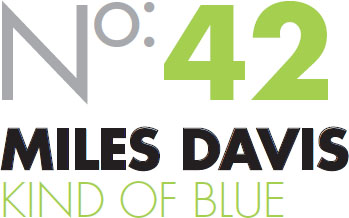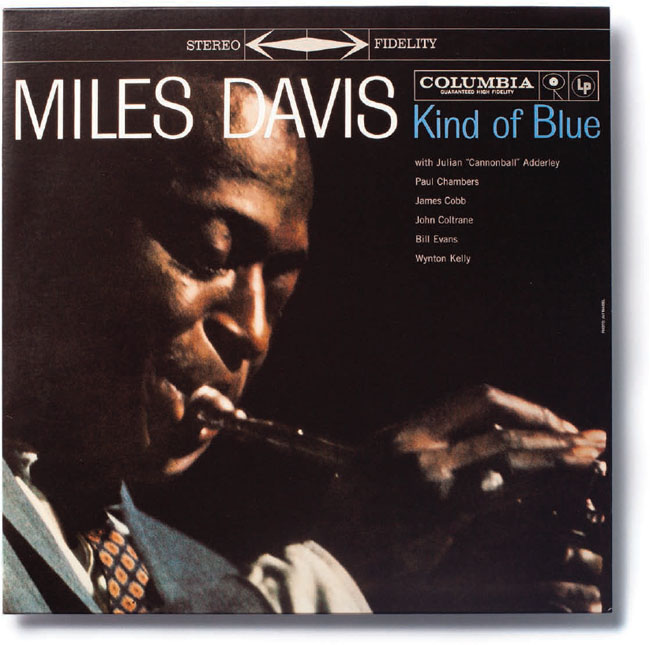
Columbia
Produced by Teo Macero and Irving Townsend
Released: August 1959
TRACKLISTING
01 So What
02 Freddie Freeloader
03 Blue in Green
04 All Blues
05 Flamenco Sketches
On 2 March 1959 Miles Davis, then 32 years old, arrived at 30th Street Studio in Manhattan for the first of two scheduled sessions. At the time the streets of New York echoed with the riotous cacophony of bebop. Instead of the usual chord charts and head arrangements, Miles hadn’t discussed the material with his band. He suggested some keys and they improvised almost a whispering deep blues that spoke directly of the quiet place in all of us, the place where thoughts and emotions and dreams are born. No music, before or since, has so directly touched the soul. Kind of Blue is one of the most successful jazz albums of all time because it’s music that transcends jazz.
‘He had this sound that was like a haunting voice,’ says bass player Charlie Haden, describing Davis’ playing. ‘The way he plays it makes you feel life so deeply you can almost cry. It didn’t really sound like a trumpet anymore.’
Miles Davis was influenced by his pianist Bill Evans who in turn drew on classical composers such as Béla Bartók and Maurice Ravel. Davis saw a linkage with the blues. The trumpeter and pianist had been talking about this style for some time. They had recorded some of it on the previous two Miles Davis albums. The revolution of Kind of Blue was simply how far Miles took the style.

Part of the secret to the album was the exceptional sextet (Evans was just sitting in) – Julian ‘Cannonball’ Adderley (alto saxophone), John Coltrane (tenor saxophone), Paul Chambers (bass), Jimmy Cobb (drums) and Wynton Kelly (piano) were all soon-to-be legends in their own right. Davis and Evans had worked on outlines for the tracks but Davis thought first reactions were best and wanted to keep the songs free. ‘He was giving [the band] instructions about the tunes they were going to play,’ recalled drummer Jimmy Cobb. ‘There wasn’t a whole lot of music. I didn’t have any music at all – a piece of manuscript paper with some chords scribbled on it. Miles tells me, “make this sound like it’s floating”.’
In his liner notes to the album Bill Evans draws a comparison with Zen and the art of Japanese painting; that the message is in the intent of the artist. ‘The resulting pictures lack the complex composition and textures of ordinary painting,’ he wrote, ‘but it is said that those who see well find something captured that escapes explanation’. ‘So What’, which opens the album, is a perfect example: spare, elegant piano chords that hang in space, accenting the charged silence. The song is defined by its silences as much as its noises. ‘All Blues’ is just that – a simple blues in 6/8 time with the warmth and familiarity that evokes while the horns drip with emotion and Davis’ trumpet sounds like a far off cry in the night.
Kind of Blue, like the best jazz of the ’50s, evokes high modernism – the cosmopolitan sound of the post-war world and new designs for living. Davis’ modal scales inspired the rock improvisers that would arrive 10 years later with Santana, Pink Floyd and the Allman Brothers. His horn phrasing would be copied by James Brown and in the hypnotic work of Phillip Glass and modern composers. As the great jazz and blues critic Robert Palmer wrote, ‘listen to it until it seeps into your dreams … and fills your soul with the sacred expanding nothingness’.